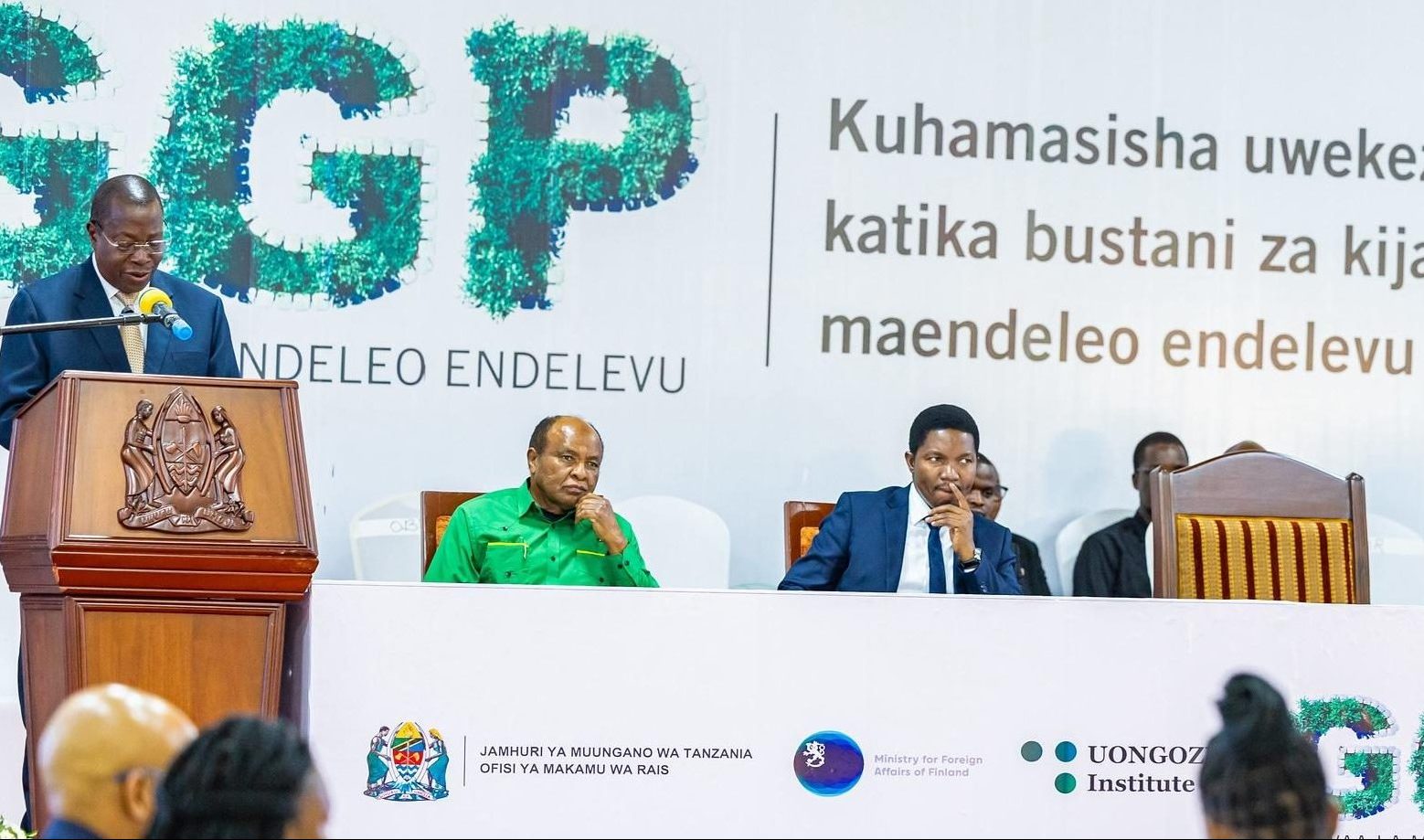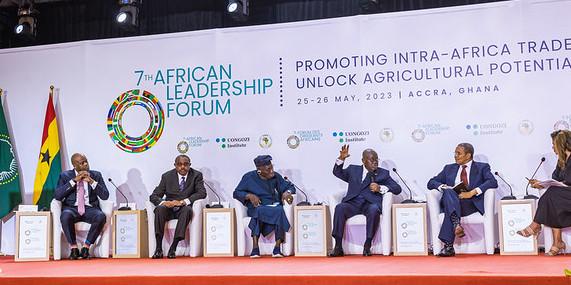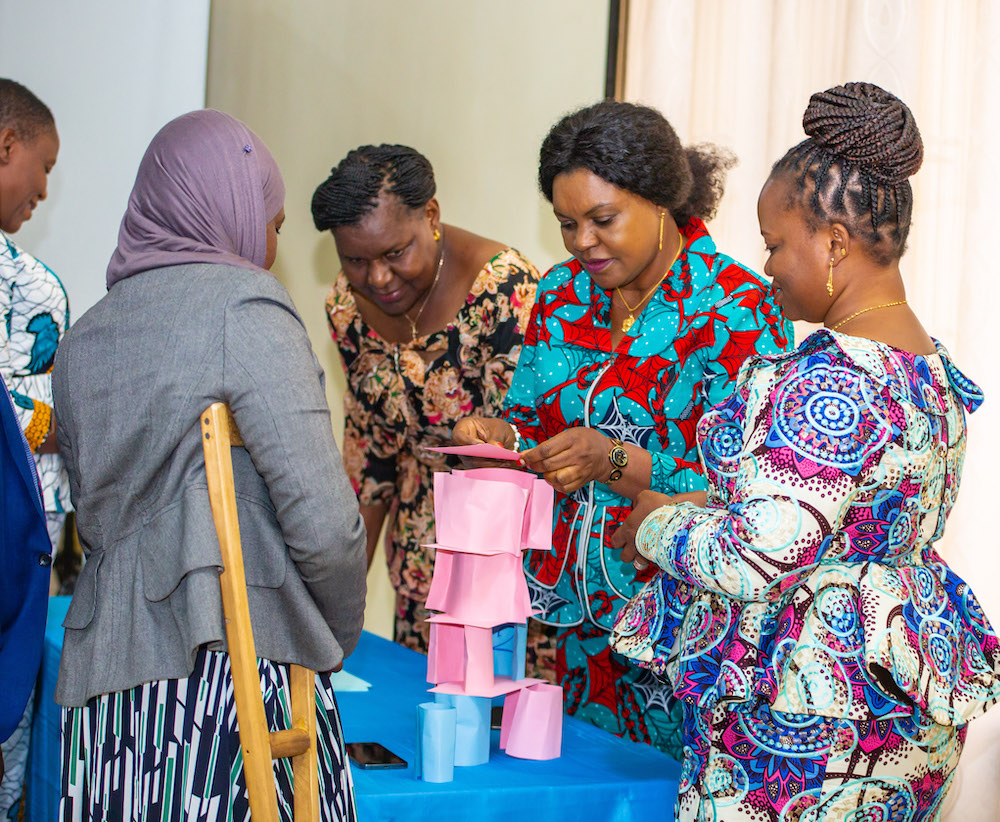By Sandra Grindgärds
The discussion about women in politics and public leadership positions is not new. In 1979, the Convention on the Elimination of All Forms of Discrimination against Women (CEDAW) was adopted (and signed by Tanzania). In the convention, the basic principle of equality between men and women, and how to ensure women’s access to and equal opportunities in political and public life were set. Yet today, 38 years on, women are under-represented in decision-making positions and attaining them remains a challenge globally.
According to the Inter-Parliamentary Union, only 22.8% of the seats in Parliaments globally are held by women, which is also the regional average for Sub-Saharan Africa. In Tanzania, 126 (36 %) seats are held by women, making Tanzania rank 23rd in the world with regards to women in Parliament. Furthermore, only 17 per cent of government ministers globally were women as of January 2015, with the majority overlooking social sectors, such as education and family matters. At the time of writing, ten women are serving as Head of State and nine as Head of Government, which is around 6 – 7% of the positions available. When looking at the private sector the numbers do not look better. Globally, women hold only 24% of senior management positions. In top executive positions in large companies, women are even fewer. Studies suggest only 8 – 12 % of global businesses have a female CEO or Managing Director. It is a familiar story.
Attaining gender parity in political participation and decision-making was set as a target internationally in 1995 in the Beijing Declaration and Platform for Action. The target was also set as a part of the Sustainable Development Goals under Goal 5: “Ensure women’s full and effective participation and equal opportunities for leadership at all levels of decision making in political, economic and public life”. Since 1995, some progress can be said to have been made as only 10 per cent of the members of legislative bodies were held by women back then. However political representation is not enough, inequalities between women and men persist and major obstacles remain. Research indicates that a more diverse leadership contributes to better policies and, in business, to increased profits. Evidence suggests that companies with better female representation deliver 34% greater returns than those with lesser representation.
So why is the change so slow? Women face multiple interlinked obstacles, linked to cultural, social and institutional factors on all levels in society. This contributes to sustain structural barriers for women in politics and leadership positions. It is necessary to analyse profoundly existing gender roles and mainstream gender policies. Women traditionally, in most cultures, carry the main care responsibilities like household work and childcare. This role is challenging to combine with politics and business life, if systems are not put in place to enable women to have active professional lives. For instance, providing childcare services; creating policies for sharing household responsibilities more equally; and holding legislative sessions during hours when women can participate.
Gender mainstreamed policies and laws, like the examples above, have often been passed and enacted when women have entered the legislative bodies. Even if every woman does not necessarily champion gender matters, our socially constructed gender roles gives men and women different experiences and perspectives. Hence, men and women tend to have different priorities while in power. Laws that combat social barriers for women, like access to education, reproductive health services, and tackling gender-based violence are more often passed when women are in decision-making positions. To foster a broader and gender-sensitive representation it is crucial that social barriers are removed. Education is key; not only that equal access to education should be assured, but also the quality of it and how gender is addressed in the education system is important.
It is also important to discuss institutions. Political institutions and organisational cultures may either foster an enabling or disabling environment. These institutions set standards for how easy or difficult it is for outsiders, like women, to win seats in elections or reach leadership positions. For instance, proportional electoral systems with multiple member districts foster an equal representation better than other electoral systems. Another institutional tool is gender quota systems. Tanzania has reached the Beijing target of 30% of Legislature being women due in large part to the implementation of a quota system, which is the case in the majority of countries that have around 30% women in parliaments. When applying quota systems, it is important to analyse their long-term effects on equality. What would happen if the quota system were to be removed, would the representation remain balanced? Do the systems succeed to mitigate existing power structures? A quota system should not erase competition, but ensure that women can enter the competition on equal grounds as men. A quota system pushes for change, but quotas alone won’t erase all barriers.
Other measures must also be considered. For instance, political parties, which often are identified as main gatekeepers for women’s representation in politics, play an important role. Political parties’ bureaucratic processes and systems might either foster or hinder women’s participation. If women are not actively engaged in political parties nor hold leadership positions within the parties, it will be difficult for women to successfully run in elections. Political parties can put in place systems that support and prepare women for leadership, like mentorship programs and the allocation of appropriate resources for women wings, and high-potential women.
Institutions may also foster a certain kind of power culture that can create barriers for women. When women enter legislatures or management teams, they enter a traditionally male-dominant arena where the majority functions according to rules set by men. Women might encounter challenges to act in such systems. Legislative sessions may be held late at night or women do not have access to informal networks, which were created when only men had access to power. Hence, it is important to look at cultures within power establishments. It is also noticed that when women enter legislative bodies they introduce new working tools, which might challenge existing systems. In many countries women platforms, bringing women together across political party lines, have been introduced. This also fosters a cross-party dialogue, which can contribute to a change in the political culture and enhance both women’s participation and representation.
Furthermore, building a political career or becoming a successful leader is a long-term project. You have to gain experiences, build a legacy, create your constituency and have access to both economical and social capital. This can be done both inside parties and in other arenas. In Rwanda, which has the highest number of female members of parliament in the world, many women were active in civil society organisations before becoming elected representatives. Civil society has generally had a stronger track record of enabling women, including; creating networks, finding supporters, and gaining valuable experience. An activist with many supporters is also a person a political party would want to get on board, as such a person has already attracted potential voters.
Finally, we should not neglect the importance of role models. Female leaders and politicians may inspire other women to pursue a career in politics. A study of more than 1700 senior executives worldwide showed that a highly regarded female CEO inspires other women to seek leadership positions. Women leaders are needed in all parts of society. Measures to ensure women’s participation in civil society organisations and local leadership structures are as important as it is to ensure women’s participation in politics and business. It is also essential to address this on all political levels, both locally and nationally.
However, change will not happen if men are not engaged. Men working for equality are as important as women working for equality. Both men and women are needed in politics and business, as well as at home sharing care responsibilities and household work equally with women. Only when gender equality is in focus in all parts of society, will we be able to mitigate power structures that hinder women to succeed in attaining leadership and decision-making roles.
Sandra Grindgärds is a freelance consultant specialising in politics and gender. She has worked with the Tanzania Women’s Cross Party Platform and the UN Peace Operation in Cote d’Ivoire. Prior to that, she was politically active in her native Finland, and she has worked at the European Parliament in Brussels.






